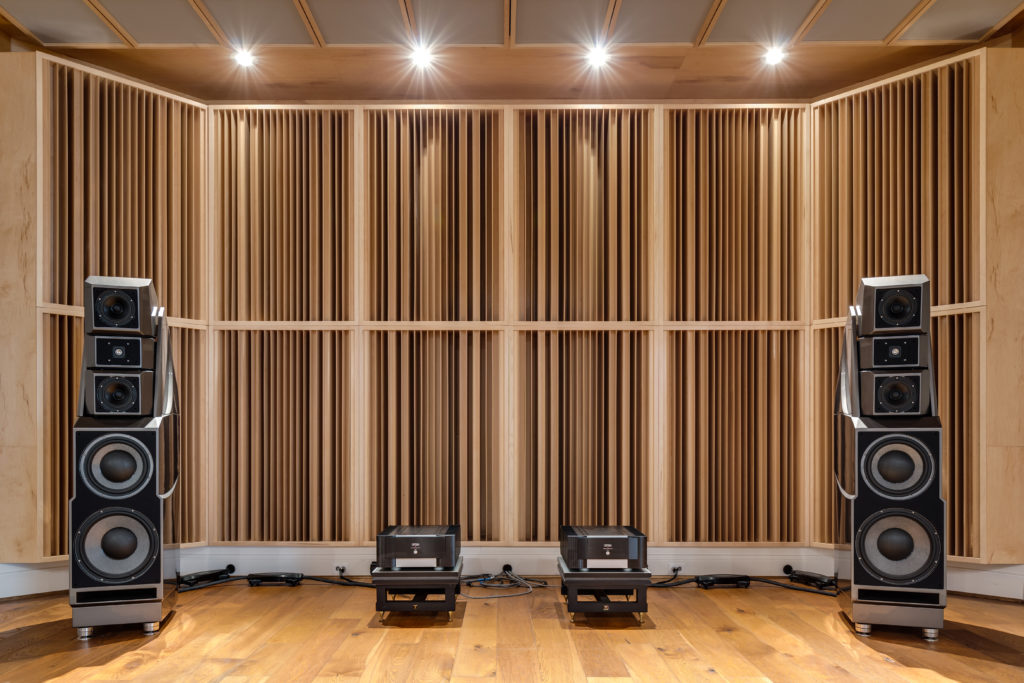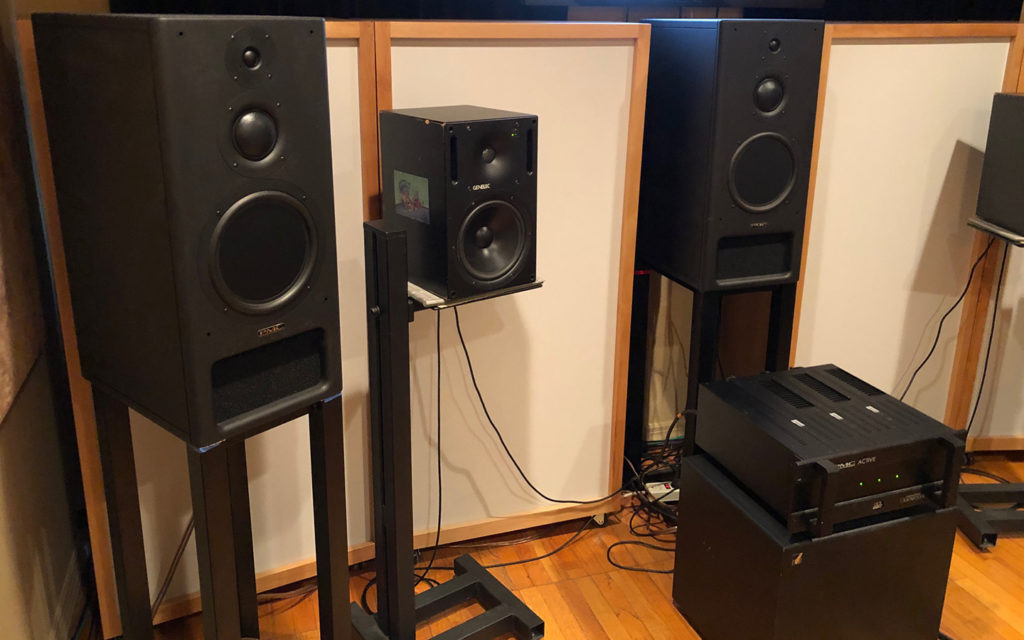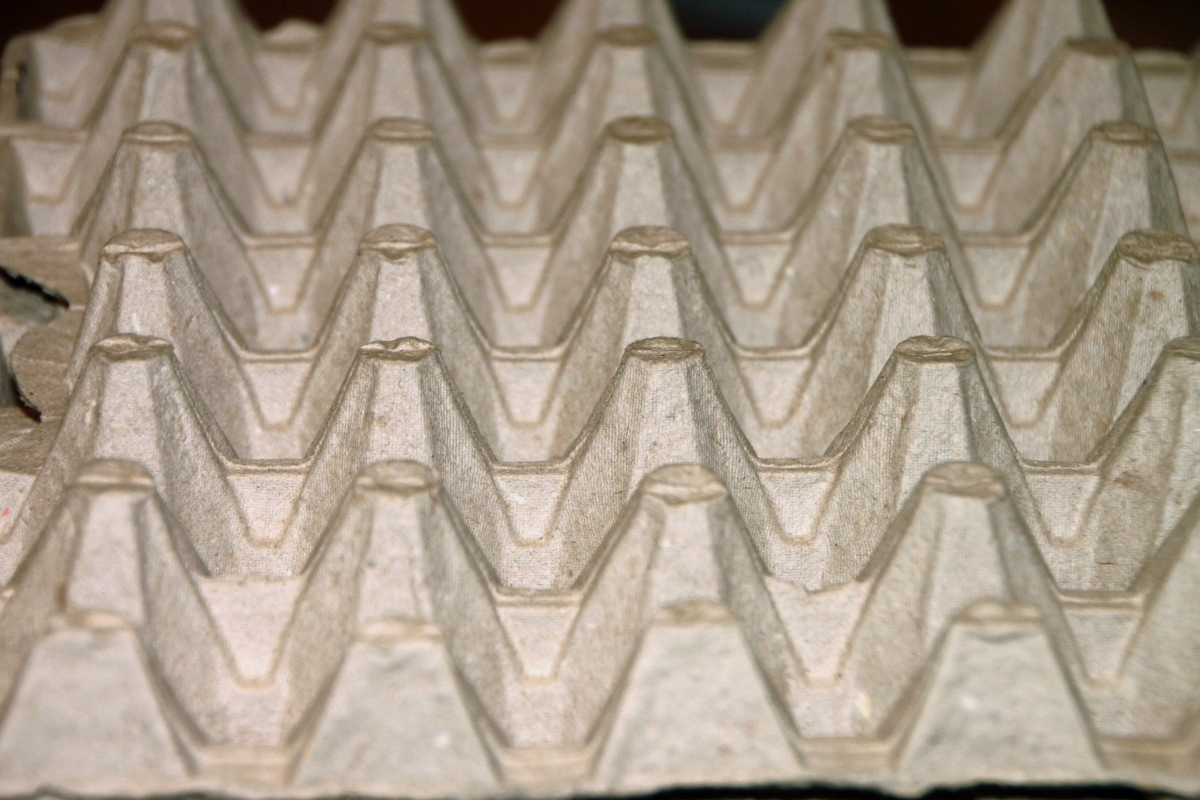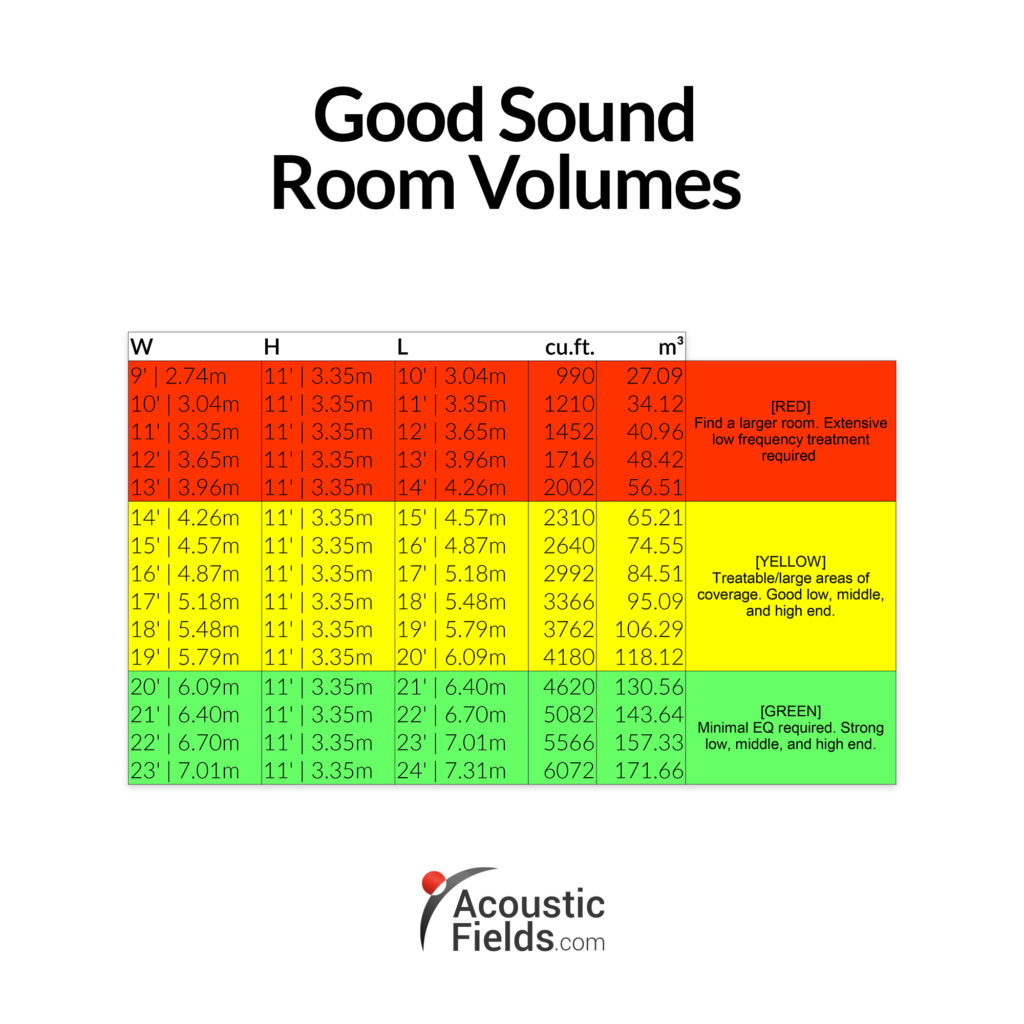This blog has been updated from its original posting to reflect new information regarding acoustic myths, and what you should avoid. Updated on 12/2/19.
Art And Science
Acoustics is both a blend of art and science. Sometimes there is more art when there needs to be science. People are told half-truths by acoustic product manufacturers that play upon the ignorance of people when it comes to physics and mathematics. Here are some examples of art replacing science.
Small And Large Rooms
As I work back and forth between large room reverberation times and small room resonances, one gets the opportunity to speak with many individuals associated with the audio and video equipment within those large and small rooms. There are an understanding and general agreement about their current acoustic issues but a lot of misunderstanding on how to solve the issues and with what materials to use.
Sound Absorption: https://en.wikipedia.org/wiki/Absorption_(acoustics)
Egg Carton
One popular misconception is about room treatments. We all remember the egg carton, one of the most wide spread acoustic myths. It was the cure-all from sound isolation to bass absorption. It was a natural diffuser. It does look like some type of exotic, two-dimensional diffusor, but its ability to provide any diffusion is negligible if any at all. It has absolutely nothing to contribute to sound isolation other than how can I remove this from the job site. It has no mass for sound isolation and did not absorb or diffuse any amounts of sound energy.
Carpeting
Carpeting is another standard room item that has fallen into the realm of acoustic myths. Remember, when you saw it on walls in studios. Right idea, wrong material. Although those shag carpets of the ’70s might have had higher than normal carpet absorption coefficients, the carpet was given more acoustic credit than it deserved. People have referred to acoustic carpet sponges which goes a long way to show the ignorance of people. Does furniture absorb sound? It is nice to have carpet on the floor in a control room. It would not be wanted in a live room where cellists and acoustic bass ground their instruments to the floor. Carpet can damp the resonance of the acoustical instrument. Once again, as with the egg cartons, no mass for sound isolation and really not a consistent and predictable wall treatment for reflection control.

Quadratic Diffusion Behind Speakers
Furniture
Furniture is not acoustic room treatment. Does furniture absorb sound? No, not any more than carpet. A couch is not a “bass trap”. A couch can have an impact on middle-low frequencies but will do nothing for a 40 Hz. wave and all of its fundamental cousins. It can because its size has an impact on reflections, but that impact depends on its covering type. If it is fabric we are probably fine, the leather surface treatment may even add to our reflection issues. Furniture having absorbing properties is another one of those widespread acoustic myths.
Special Technologies
Technologies to absorb sound have to have sound absorption as their design parameters. You must design and create the product based upon the laws of physics. Using a piece of furniture or acoustic carpet sponges to absorb sound is not what furniture is designed to do. There are low-frequencies that must have special technologies to absorb it and there are middle and high frequencies technologies to absorb rays of energy instead of waves.
Diaphragmatic Absorption: https://www.acousticfields.com/product-category/sound-absorption/acda-series/
Open-celled Foam: https://www.acousticfields.com/product/acoustic-foam/
Bass Traps
Treating the low-frequency resonances in small room acoustics takes up a lot of space. This is partly true when one looks at the small room project studio. A 12″ deep “bass trap” does take up a lot of space if your room is only 10′ wide. If your room is 20′ long, it is not that much space for the benefit received. Contrary to common marketing practices and claims, the foam will not stop low-frequency energy. Here’s a good tip: If you can pick up the low frequency absorbing unit by yourself and move it easily around, It is not a very powerful absorber at lower frequencies. There simply is no better way reflected in the current technology to absorb bass wave energy without using mass.

Diaphragmatic Absorbers Behind Speakers
Room Shape
Room shape is critical. A rectangular room offers predictable and consistent reflections that one can then apply the consistent and predictable treatment. Room resonances are highly predictable in a rectangular room and are readily determined by the dimensions of the room. One can apply low-frequency resonance control to a rectangular room at the corners and at all room boundary intersections.
Size Does Matter
Room size does matter in the recording process. One can not avoid the laws of physics and squeeze a smooth frequency response out of smaller rooms. It is just not possible. Well, it can be done but one may have to make the room smaller by applying low-frequency treatment in the ceiling area. No one wants to hear that. Sometimes, we must talk to our clients out of using that small room for anything but storage for a future room build that has the necessary dimensions to minimize room resonance issues.
Speaker Positioning Does Matter
Speaker or monitor positions do matter. A speaker is a device that produces acoustic energy and then interjects into a box or room. The acoustic energy produced travels at the speed of sound which is a constant. In order to achieve stereo imaging, we must have both distances from all room surfaces in some balanced dimensional pattern. Speaker to speaker distances must be balanced and first sidewall surface reflections must be equal on both speaker sides. Not only do we want the direct sound to travel straight to our listening or monitoring position, but we also want the sidewall reflection arrival times to be the same at the listening or monitoring position to create the proper stereo image.
EQ Given Too Much Credit
Equalization will not solve all your issues. One needs to get it right in the room. Choose the right microphone and place it in the correct room location and contribute these processes to achieving the best sound you can without adding any electronics to it. If you have a purer original signal then less electronic manipulation is needed with the board. Less is always more in this process.
In Summary
I hope today’s discussion helps to debunk some of those old acoustic myths we all hear about. Please message me at info@acousticfields.com if you have any questions as I am always happy to help. If you want more to learn more about room acoustics please sign up for our free acoustic video training series and ebook. Upon sign up you will instantly have access to a series of videos and training to help improve the sound in your studio, listening room or home theatre.
Thanks,
Dennis









I have a 15xw 24dx7ft ceilings with a 60inch tv in the center of wall,seating is 10ft from speakers.Walls are bear,having a tough time finding a sweet spot in the finished basement,where is a good starting point for me.Also i have a leather couch,and a leather listing chair ,i know thats not good but its not much i can do but maybe change the listing chair, any suggestions on a listing chair.Is it possible to get some decent sound
without breaking the bank.thanx Tom
Hi Tom, Fill out the information in this link and lets take a look at your room: https://www.acousticfields.com/free-room-analysis/